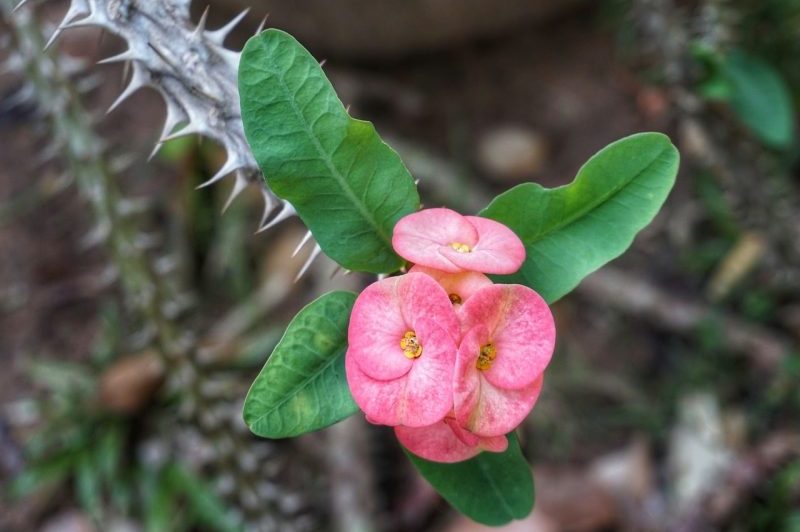If you’re interested in learning how to prune euphorbia, you can simplify it into two easy steps. It might be shocking for some gardeners to find out that Euphorbia plants would benefit from pruning, but this is a practice that can rejuvenate them and encourage blooming. While euphorbia is easy to grow and maintain, always provide the ideal techniques and stable conditions to keep it happy.
The greenhouse is also an excellent location to grow euphorbia, especially if your area has harsh winters. You can propagate euphorbia by seeds or cuttings, but healthy parent plants are crucial for your success. This article will discuss pruning and some tips on how to care for your euphorbia to achieve them.

How To Prune Euphorbia For Beginners
Before anything else, you want to classify your euphorbia plants into two groups. You can either have those with stems above the ground throughout the year or those with seasonal branches above ground. However, do note that there are also woody plants year-round, and you can prune them to maintain their shape any time of the year.
This classification’s importance is that those that have stems above ground year-round don’t require cutting back in fall. You risk not having blooms in the next spring, so it’s best to cut the dead branches from winter in early spring instead. On the other hand, the second group of euphorbia plants requires pruning to the crown because they go dormant in fall.
Step #1. Preparation
The first step in pruning euphorbia is the preparation of both the tools and plants. Pruning any plant can present an opportunity for diseases, pests, and other problems when you don’t practice proper sanitation and diligence throughout. Remember to clean and disinfect the tools that you’ll use before cutting the plants.
You also want to check the plant itself for any signs of diseases and infection. This way, you can avoid contamination and spread of pests or conditions when you prune them. The growing season is an excellent time to examine your euphorbia plants for any dead or damaged foliage.
Step #2. Cutting
Once you’ve secured the pruning tools and plants, you can proceed to prune. The ideal time to prune euphorbia is both after the blooming season. Removing the faded blossoms on your plants can extend the blooming period and encourage another cycle of flowering on both euphorbia groups.
Experienced gardeners also cut back euphorbia to the ground in the fall before the first frost. This will ensure that the growth next year will be healthier and more vigorous. Please wait for the plant to spend all its shoots and cut through them at a 45-degree angle.
Caring For Euphorbia Plants
Location
One can assume that the best location for growing and maintaining euphorbia is somewhere that receives full sun. The fantastic thing with these plants is that they can even tolerate challenging conditions. However, you still want to use well-draining soil even though they can survive drought to ensure healthy blooms.
You can also grow your plants indoors if your outdoor climate is too cold. Euphorbias should thrive in pots, but make sure you are using at least 3-inch pots to provide adequate space. What about the ideal temperatures for euphorbia?
You must check the type of euphorbia you are growing to know the best temperature range. For example, some plants can thrive between 50 to 55°F, but some are best in 55 to 60°F conditions. If your environment is unstable, perhaps it’s better to keep them in the greenhouse.
Water and fertilizer
As mentioned earlier, euphorbia tolerates drought. Still, soil moisture is vital to keep the plants healthy and at a lower risk of developing diseases. You must be mindful of your watering practices, so you don’t risk fungal diseases like powdery mildew.
Remember that you must adjust watering depending on the climate as well. Your plants shouldn’t have the same frequency or amount of water during spring and winter. More so, you must water in the evening during warm conditions and adjust to watering in the morning in winter.
Water the plants by targeting their undersides and don’t keep them in soggy soil. You can also conserve soil moisture and prevent weeds by mulching. On the other hand, euphorbia plants don’t require fertilizers to perform well.
You can still feed with water-soluble fertilizers if you notice yellowing of leaves or provide a balanced feed during the growing season as maintenance.
Do You Need To Repot Euphorbia?
Another remarkable thing about euphorbia plants is that you don’t need to repot them every year, unlike other species. However, always monitor your plants if they are overgrowing the container. You can do this at the start of the growing season in early spring and then water them after a week to help them recover.
Conclusion
Euphorbia is one of the best plants to grow if you are a beginner gardener. Their maintenance is not demanding, but you need to learn how to prune euphorbia according to their type. Remember that you will only need to cut back those that go dormant in fall, but all euphorbia plants will benefit from deadheading.
More so, you want to provide the ideal conditions and practices to keep your plants healthy and blooming. They will benefit from a warm environment, adequate soil moisture, and occasional feeding like other easy-to-maintain plants. Overall, your type of euphorbia will dictate the specific adjustments you’ll make.
